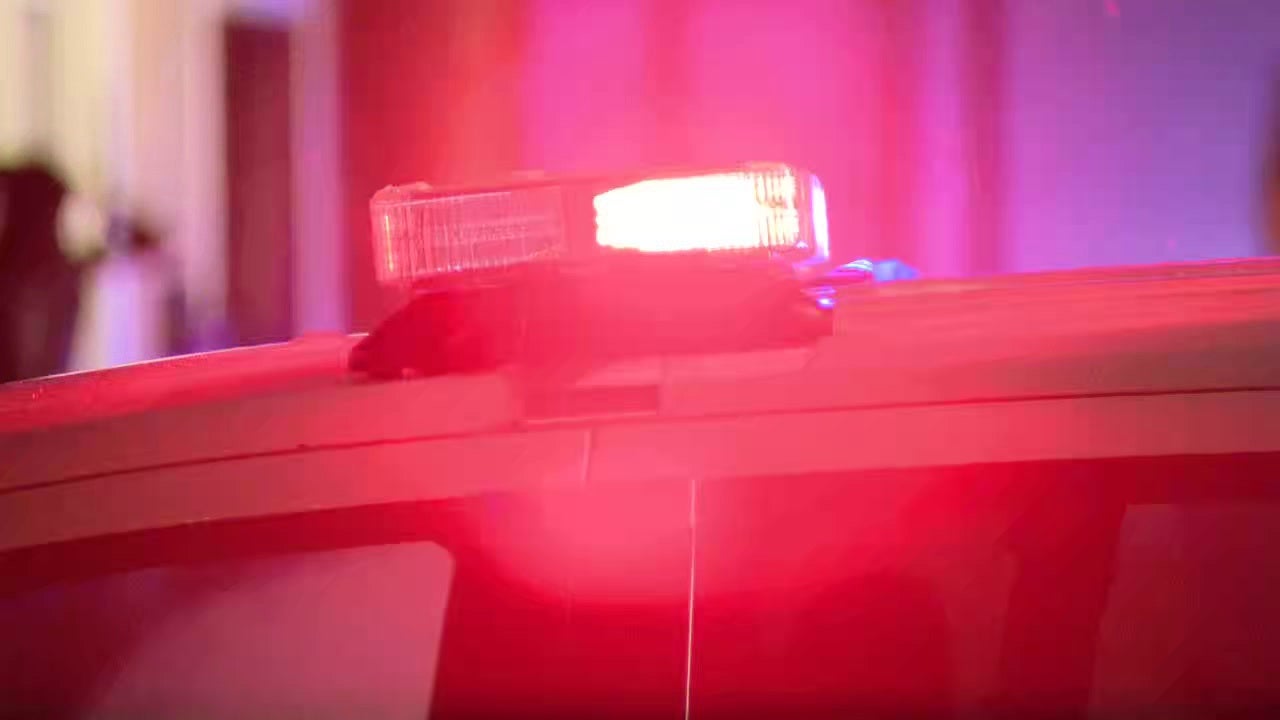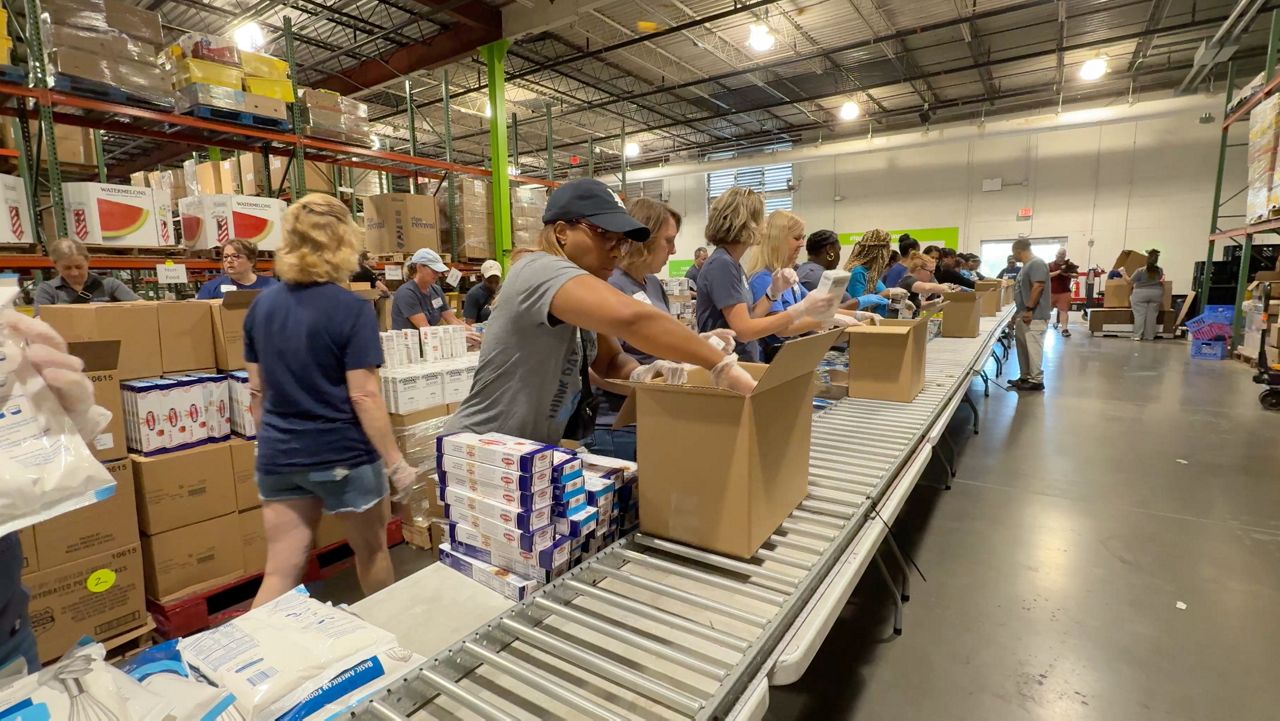Delaware
Delaware water supply still in good shape despite worsening drought

Why La Niña could cause extreme weather this winter
La Niña, the cooler phase of the El Niño-Southern Oscillation (ENSO), can have significant impacts on global weather, especially during the winter months.
unbranded – Newsworthy
The worst drought in over 20 years is continuing to expand over Delaware, and current forecasts offer minimal relief.
Gov. John Carney declared a statewide drought watch on Oct. 25 asking residents to voluntarily conserve water. The watch came a week after an indefinite outdoor burn ban from the Delaware Fire Marshal.
The drought watch encourages state residents to limit watering their lawns and outdoor plants and to avoid using potable water to do so.
The governor’s declaration said the drought watch was triggered by low precipitation and stream flows in northern New Castle County.
Wilmington and Georgetown had the driest September on record, and October is lining up to have only a trace of rain in some locations at best. The state is on track to break a record for most consecutive days without rain, which is 34 days in both places.
Broadly, the state’s water supply, especially New Castle County’s reservoirs, is still in good shape. Newark is pulling from its reservoir as flow of the White Clay Creek gets lower. The reservoir off of Paper Mill Road was built after the drought of 2002, the worst drought on record in northern Delaware.
A drought watch is the first step in the drought operation plan, which was developed in the 2000s with the four states in the Delaware River Basin, Delaware, Pennsylvania, New Jersey and New York, to coordinate drought response. New Jersey is also in a drought watch.
A drought warning would be the next step, and a drought emergency is when residents could face mandatory water conservation. That would take a much longer period of no rain to get to, said Gerald Kauffman, director of the Water Resources Center at the University of Delaware. The last drought emergency was in 2002.
“There’s a lot of backup water supply,” Kauffman said.
Wilmington’s water supply comes from the Brandywine, which flows from Pennsylvania into the Christina River, which flows to the Delaware River. Its levels are good, according to Kauffman, but they are actively monitoring them. If the water level goes down, the city can always pull from Hoopes Reservoir, a New Deal-era reservoir that can supply the city in the event of severe drought.
Kauffman said that reality is “off a ways,” however.
Veolia, which supplies New Castle County’s water, said the low precipitation levels have not affected its operations or ability to deliver water to its customers.
Artesian, which also supplies water to much of the unincorporated areas of the county, said it does not anticipate impacts on customers.
Downstate, the water supply is reliant on groundwater wells, which are at good levels.
Dover relies on water from wells near Route 9.
Lewes and Rehoboth Beach also rely on wells, some of which are over 100 feet deep. While these wells are in a good spot right now, they will not be recharged without rain.
Private individual wells in the less dense parts of Delaware would be the first to discover groundwater shortages because they are not as deep, according to Kauffman.
However, Kauffman has broader concerns about this drought. Not having even 0.01 inches of rain in a single month is what you would expect in Phoenix, not Delaware or anywhere in the Northeast. He said legendary droughts are set up by dry falls, and he warns this one could set up a dry spring and then summer next year. A summer with a drought this severe would hurt Delaware’s most valuable industry, agriculture.
“The only saving grace right now is that we’re in we’re late in the growing season in October,” he said. “If this were June, it would be a much more concerning situation.”
In the near term, Kauffman said he is concerned about the salt line between the Delaware Bay and Delaware River moving northward with freshwater flow ground to a halt.
The line between salt and freshwater in the Delaware is currently past the Commodore Barry Bridge between New Jersey and Pennsylvania. That salt water then creeps into the Christina River in Wilmington and could creep into the White Clay Creek and Red Clay Creek.
Veolia actively measures the salt contents in the White Clay Creek in an area near the Christina Marsh, which is bisected by I-95 near Churchman’s Crossing. Fortunately, Veolia said the salt levels are measuring as normal at the plant in Stanton.
While it is difficult to know whether the drought is the direct result of climate change, Kauffman said pattern stagnation is accentuated by climate change. A dry high-pressure system has been camped above the Northeast for a while now, preventing any notable weathermakers to come into the area.
For now, Kauffman said the drought response is operating normally.
“These measures that you’re seeing, chloride monitoring, drawing from Newark Reservoir, Veolia, working with Wilmington, in case they need the Hoopes Reservoir, this is all in the drought operating plan just waiting to be utilized at this point,” he said. “So the conclusion is the drought operating plan is working as designed.”
(This story was updated to meet our standards and to add a graphic.)

Delaware
Wilmington mother seeks justice 3 years after son’s murder in Philadelphia

WILMINGTON, Del. (WPVI) — Three years after her son was fatally shot in West Philadelphia, Kameelah Torrance is still searching for answers and justice.
Samyr Walker, 19, was killed on September 4, 2022, while delivering food in his mother’s car. Torrance said Walker’s own vehicle had broken down the night before, prompting him to borrow hers to earn extra money.
“I get a phone call, I’m thinking it’s him,” Torrance recalled.
Philadelphia police said the shooting occurred around 1:45 p.m. at the Chick-A-Boom restaurant drive-thru on 46th Street and Lancaster Avenue. While waiting for his food, Walker reportedly had an interaction with another driver.
“What I’m guessing is maybe he was on his phone and he accidentally tapped the bumper, which is what happened,” Torrance said.
Police said the altercation escalated when gunshots were fired from the suspect’s car as Walker exited his vehicle to retrieve his order. A passenger in Walker’s car also returned fire. Authorities believe the motive was road rage.
According to the Philadelphia District Attorney’s Office, detectives located the vehicle believed to be involved and interviewed both the owner and the reported driver. However, no arrests have been made.
The DA’s office said it has extended victim support services to Walker’s family and the affected community.
Torrance described her son, affectionately called “Meer Meer,” as “a very happy-go-lucky kid.”
“Every time you see him, he was always smiling, silly, liked to have fun, very family oriented,” said Torrance.
She said the lack of closure has made the loss even harder to bear.
“No closure, sleepless nights, it’s just been horrible,” she said. “It’s not fair that my son is gone and you’re walking around free, freely doing whatever. His life was cut short.”
Torrance said she still texts Walker’s phone number and mourns the future he was denied.
“He won’t be able to get married, have children, become something of himself. He was robbed of that and it’s not fair,” she said.
Police say the investigation remains active and ongoing. Torrance and law enforcement are urging anyone with information to come forward.
Copyright © 2025 WPVI-TV. All Rights Reserved.
Delaware
*Update – Victim Identified* State Police Investigating Fatal Crash in Dover – Delaware State Police – State of Delaware

Delaware State Police have identified 14-year-old Reis Yoc-Santos, of Dover, Delaware, as the teenager who died in the fatal crash involving a school bus and an electric bicycle that occurred Friday afternoon in Dover.
The investigation remains ongoing. Anyone who witnessed the crash or has relevant information is asked to contact Master Corporal W. Booth at (302) 698-8451. Information may also be provided by sending a private Facebook message to the Delaware State Police or contacting Delaware Crime Stoppers at 1-800-847-3333.
If you or someone you know is a victim or witness of a crime or have lost a loved one to a sudden death and need assistance, the Delaware State Police Victim Services Unit / Delaware Victim Center is available to offer you support and resources 24 hours a day through a toll-free hotline at 1-800-VICTIM-1 (1-800-842-8461). You may also email the Victim Services Unit at DSP_VictimServicesMail@delaware.gov.
View All News Posts
Delaware
14-year-old boy dead, one teen hospitalized after e-bike runs stop sign, collides with bus in Delaware

DOVER, Del. – A tragic crash involving a school bus and an electric bicycle claimed the life of a 14-year-old boy in Dover.
Deadly collision with bus
What we know:
The crash happened around 4 p.m. on West Lebanon Road as a school bus was turning onto Royal Grant Way, according to police. The electric bicycle, ridden by a 16-year-old with a 14-year-old passenger, did not stop at a posted bicycle stop sign and collided with the bus.
The 14-year-old passenger of the e-bike was pronounced dead at a local hospital. The 16-year-old operator suffered serious injuries. Neither of the teenagers were wearing a helmet, police said.
The bus was affiliated with the Caesar Rodney School District and driven by a 75-year-old man from Magnolia, who was not injured. Twenty-one students on the bus were unharmed.
The road was closed for about four hours for investigation by the Delaware State Police Troop 3 Collision Reconstruction Unit. The investigation is still ongoing.
Ongoing questions for authorities
Authorities are urging anyone with information about the crash to come forward. Witnesses can contact Master Corporal W. Booth or send a message to the Delaware State Police.
If you have information, reach out to Delaware Crime Stoppers at 1-800-847-3333. Victims and witnesses needing support can contact the Delaware State Police Victim Services Unit at 1-800-VICTIM-1.
-

 Finance6 days ago
Finance6 days agoReimagining Finance: Derek Kudsee on Coda’s AI-Powered Future
-
World1 week ago
Russian jets enter Estonia's airspace in latest test for NATO
-
North Dakota6 days ago
Board approves Brent Sanford as new ‘commissioner’ of North Dakota University System
-

 World5 days ago
World5 days agoSyria’s new president takes center stage at UNGA as concerns linger over terrorist past
-

 Technology5 days ago
Technology5 days agoThese earbuds include a tiny wired microphone you can hold
-

 Culture5 days ago
Culture5 days agoTest Your Memory of These Classic Books for Young Readers
-

 Crypto5 days ago
Crypto5 days agoTexas brothers charged in cryptocurrency kidnapping, robbery in MN
-

 Crypto6 days ago
Crypto6 days agoEU Enforcers Arrest 5 Over €100M Cryptocurrency Scam – Law360





















